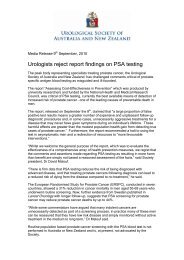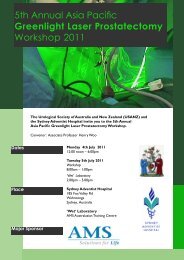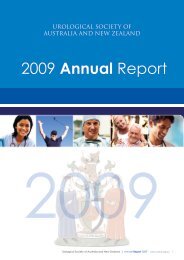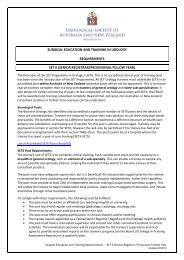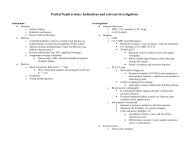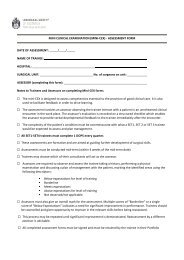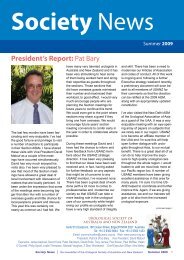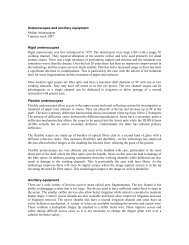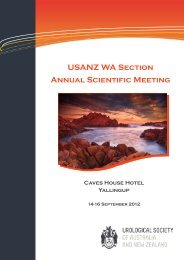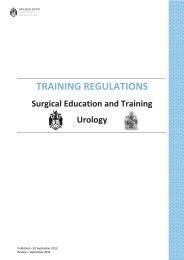CIRCUMCISION OF INFANT MALES
CIRCUMCISION OF INFANT MALES
CIRCUMCISION OF INFANT MALES
Create successful ePaper yourself
Turn your PDF publications into a flip-book with our unique Google optimized e-Paper software.
Appendix 2<br />
SUMMARY STATEMENTS <strong>OF</strong> OTHER PR<strong>OF</strong>ESSIONAL BODIES<br />
Canadian Paediatric Society (CPS)[120]<br />
Canadian Medical Association Journal 1996; 154(6): 769-780. A review of literature on<br />
circumcision was undertaken by the Fetus and Newborn Committee of the Canadian<br />
Paediatric Society, with extensive discussion over a 24 month period weighing up strength<br />
of evidence to assess whether the health of boys and men was improved by neonatal<br />
circumcision. It looked at cost-effectiveness in preventing penile problems and associated<br />
urinary tract conditions. The CPS concluded that while there is evidence that circumcision<br />
results in an approximately 12 fold reduction in the incidence of UTI during infancy,<br />
evaluation of alternative methods of preventing UTI in infancy is required. There is<br />
inadequate information to recommend circumcision as a public health measure to prevent<br />
HIV transmission and reduce the incidence of penile cancer. Such an even balance exists<br />
overall for the evidence of the benefits and harms of circumcision and as such, evidence<br />
does not support recommending circumcision routinely in newborns. The position of the<br />
CPS is unchanged from that taken in 1982. The final recommendation was that<br />
circumcision of newborns should not be routinely performed.<br />
American Academy of Pediatrics (AAP)[121]<br />
Task Force on Circumcision Policy Statement Pediatrics Vol 103(3) 686-93 Mar 1999<br />
Over the past several decades, the AAP has published numerous policy statements on<br />
neonatal circumcision of the male infant. From its 1971 manual, to the 1975 and 1983<br />
revisions, the Academy concluded that there was no absolute medical indication for<br />
routine circumcision. Due to new research on circumcision status and UTI and sexually<br />
transmitted disease, the Academy concluded that newborn male circumcision has potential<br />
medical benefits and advantages as well as disadvantages and risks. The Task Force<br />
decided it was therefore necessary to re-evaluate and analyse the recent research and<br />
literature, adopting an evidence-based approach. They concluded that where there are<br />
potential benefits and risks, and yet the procedure is not essential to the current well being<br />
of a child, the parents should determine what is in the best interest of the child. In order to<br />
assist all parents in making an informed choice, accurate and unbiased information should<br />
be given, as well as an opportunity to discuss this decision. Where the decision has been<br />
made to circumcise, procedural analgesia should be provided, and performed only on<br />
those infants who are stable and healthy. Existing scientific evidence, although<br />
demonstrating potential benefits is not sufficient to recommend routine neonatal<br />
circumcision.<br />
Royal College of Surgeons of England[122]<br />
Statement from the British Association of Paediatric Surgeons, the Royal College of<br />
Nursing, the Royal College of Paediatrics and Child Health, The Royal College of<br />
Surgeons of England and the Royal College of Anaesthetists. The natural history of<br />
separation of the foreskin - thereby making it retractable is a process in development at<br />
birth and continues up to 3 years of age in 90% of boys, although can be well into<br />
childhood for a small proportion. The process is spontaneous without the need for<br />
manipulation. The one absolute indication for circumcision is pathological phimosis (nonretractable<br />
foreskin) which is unusual before five years of age. Those performing the<br />
18



